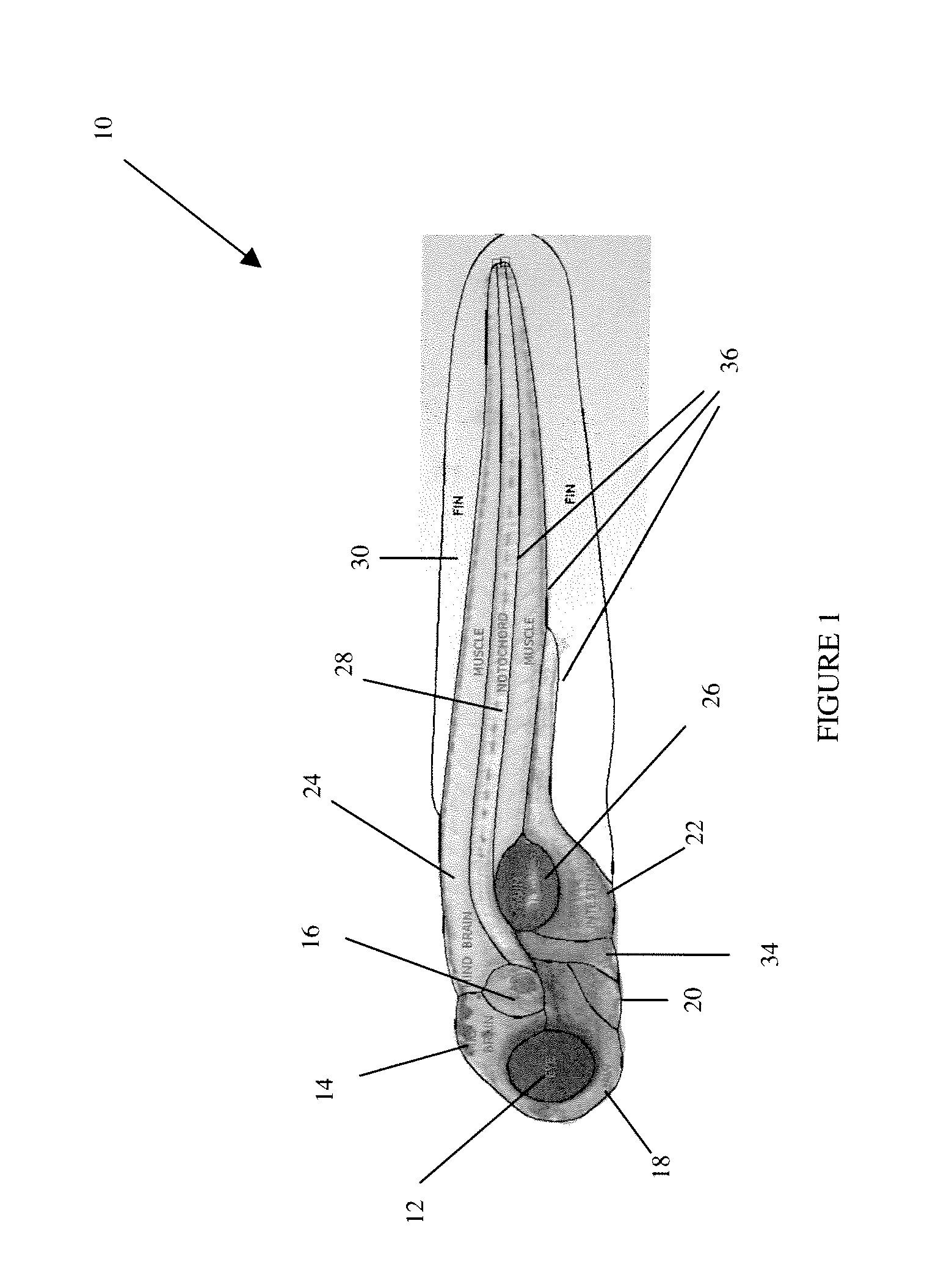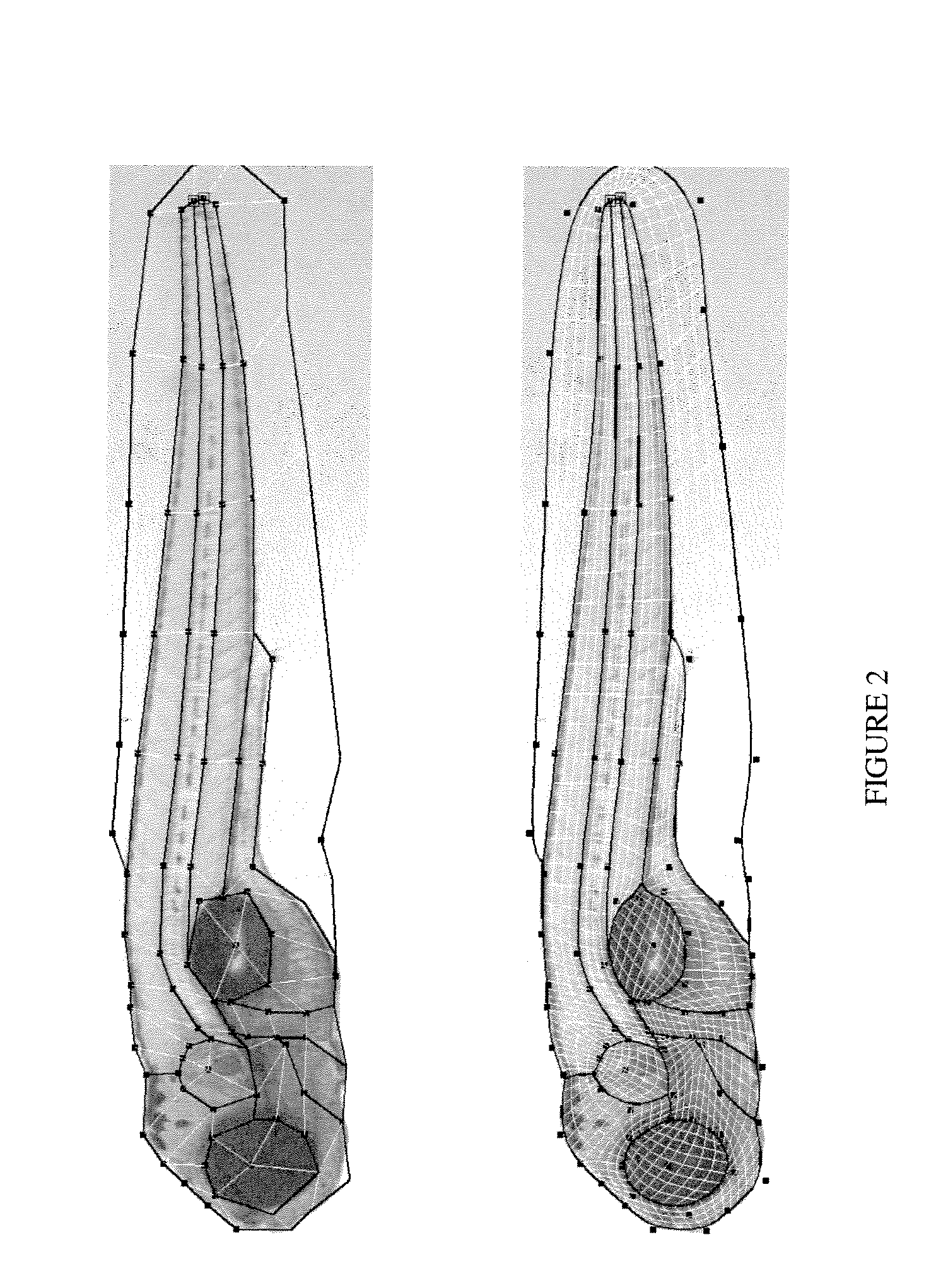Systems and methods for automated extraction of high-content information from whole organisms
a technology of automatic extraction and information extraction, applied in the field of automatic extraction systems and methods for extracting high-content information from whole organisms, can solve the problems of inability to register the atlases on an actual organism without substantial augmentation, inability to accurately detect the atlases, etc., to facilitate research and screening efforts, facilitate integrated analysis, and facilitate the effect of rapid, automated and extensive compound screening
- Summary
- Abstract
- Description
- Claims
- Application Information
AI Technical Summary
Benefits of technology
Problems solved by technology
Method used
Image
Examples
example
[0058]A dataset of measurements were generated from eleven normal zebrafish, eight wild type zebrafish and one treated zebrafish. An atlas was then fitted to the set of fish and measurements were taken of the area of various organs within each of the zebrafish. FIG. 6 is a matrix plot of the area measurements.
[0059]The methods and systems may be configured to identify the developmental stage of an organism and to identify specific organs and sub-regions within the organs. Once identified, information about the organs and sub-regions may be further used to correlate the information according to an assay and / or an image of one or more fluorescent-based channels. An atlas of the organism is used in one or more of the embodiments to automatically locate the different organs in a zebrafish, for example, and then correlate the information to a predetermined set of rules or guidelines.
[0060]FIG. 8 illustrates non-limiting uses of the methods and systems. For example, the methods and system...
PUM
 Login to View More
Login to View More Abstract
Description
Claims
Application Information
 Login to View More
Login to View More - R&D
- Intellectual Property
- Life Sciences
- Materials
- Tech Scout
- Unparalleled Data Quality
- Higher Quality Content
- 60% Fewer Hallucinations
Browse by: Latest US Patents, China's latest patents, Technical Efficacy Thesaurus, Application Domain, Technology Topic, Popular Technical Reports.
© 2025 PatSnap. All rights reserved.Legal|Privacy policy|Modern Slavery Act Transparency Statement|Sitemap|About US| Contact US: help@patsnap.com



